Graeme Farrar’s 1965 Ford Thames 400E Van hasn’t travelled far in its nearly 60 year life, as Mike Neale discovers…
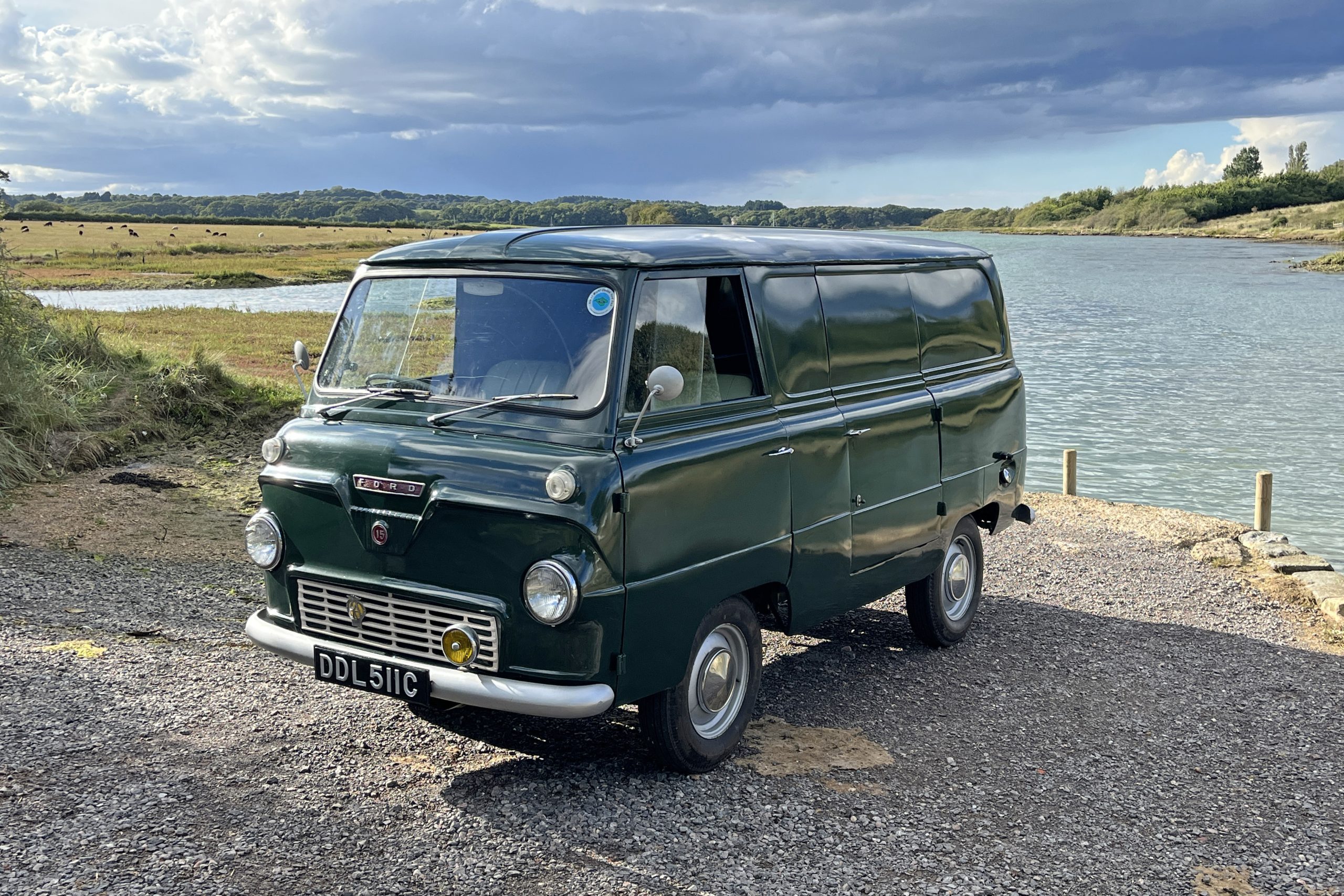
In November 1957, Ford launched their new forward control Thames 400E 10/12cwt and 15cwt van, replacing the rather antiquated prewar Ford E83W with its sidevalve engine. It could be argued that Ford were rather late to the game, with the Bedford CA having been on sale for over five years by then, although Ford had carefully assessed the competition from other manufacturers, and the situation was subsequently reversed with the Thames’ replacement, the all-conquering Ford Transit of 1965, with Bedford not responding until 1969 with the launch of the CF.The Thames 400E was a big leap forward from the E83W. It had independent coil spring front suspension, with built-in double-acting hydraulic shock absorbers. The rear suspension consisted of longitudinal semi-elliptic leaf springs, the 10/12cwt van having five leaves whilst the 15cwt had six.
The 1703cc OHV four-cylinder 52bhp low compression version of the Ford Consul Mk2 petrol engine gave the van decent performance by the standards of the day. A somewhat slower 1621cc Perkins 4/99 diesel version was also offered from mid-1961. The engine was mounted under the floor below a hinged metal flap, allowing the driver to slide over to the nearside to get out of the van if required. The three-speed column-change gearbox had synchromesh on second and top.
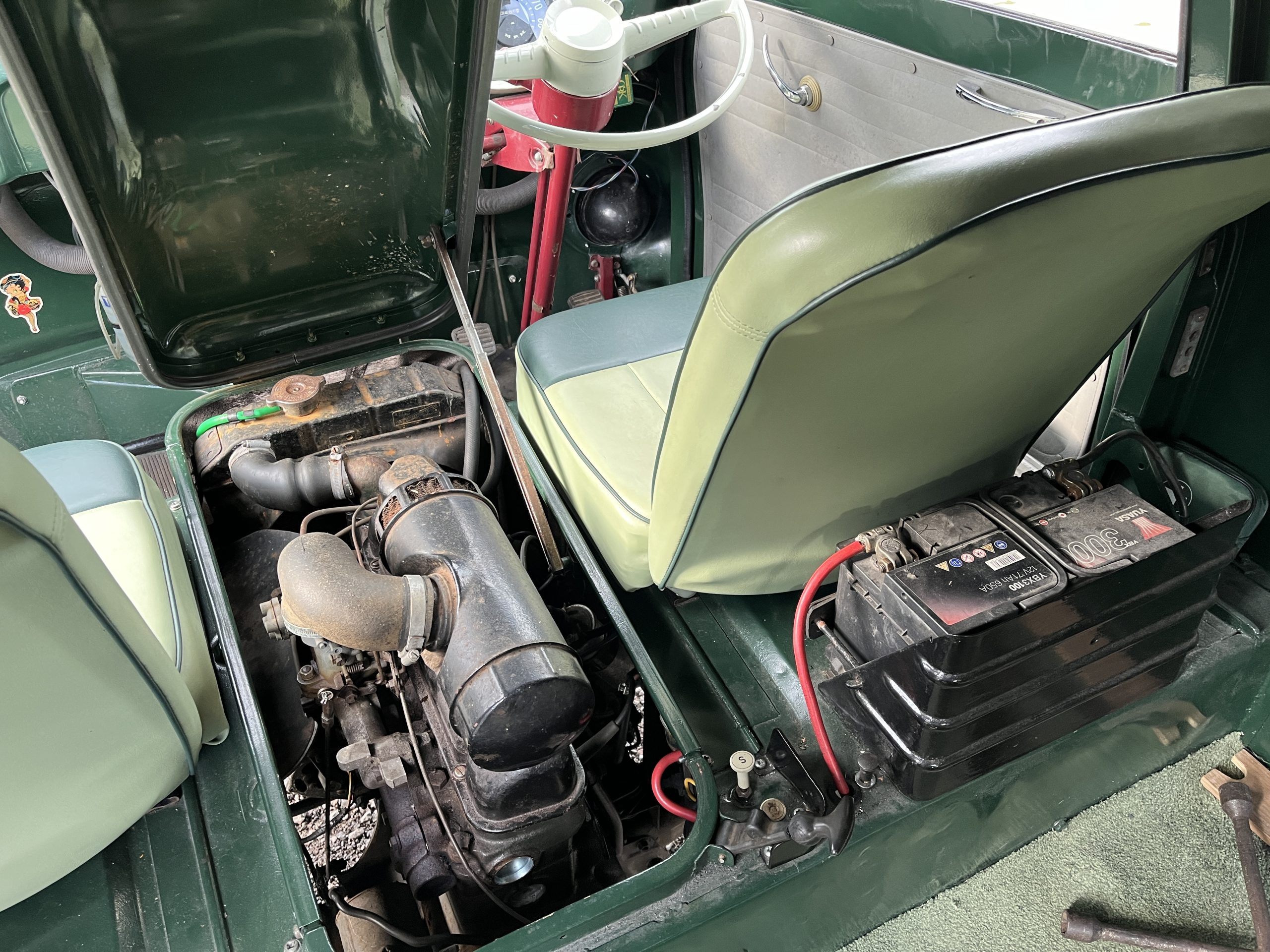
From the end of 1962, the 1703cc petrol engine was upgraded to 55bhp in low compression form, or a high compression 58bhp engine was offered, as fitted to the Zephyr 4 Mk3. A four-speed gearbox was available from that point, in which case a four-pinion heavy duty back axle was fitted to accompany this.
Unlike several of the competitors’ vans, the Thames only came with hinged cab doors, not sliding ones. However, that did mean that a side loading door could be offered as an option, which was not possible on the Bedford CA with its sliding cab doors, for example. The load space had a cubic capacity of 180cu.ft., bigger than even the long wheelbase Bedford CAL, and the wheelbase was 84in.
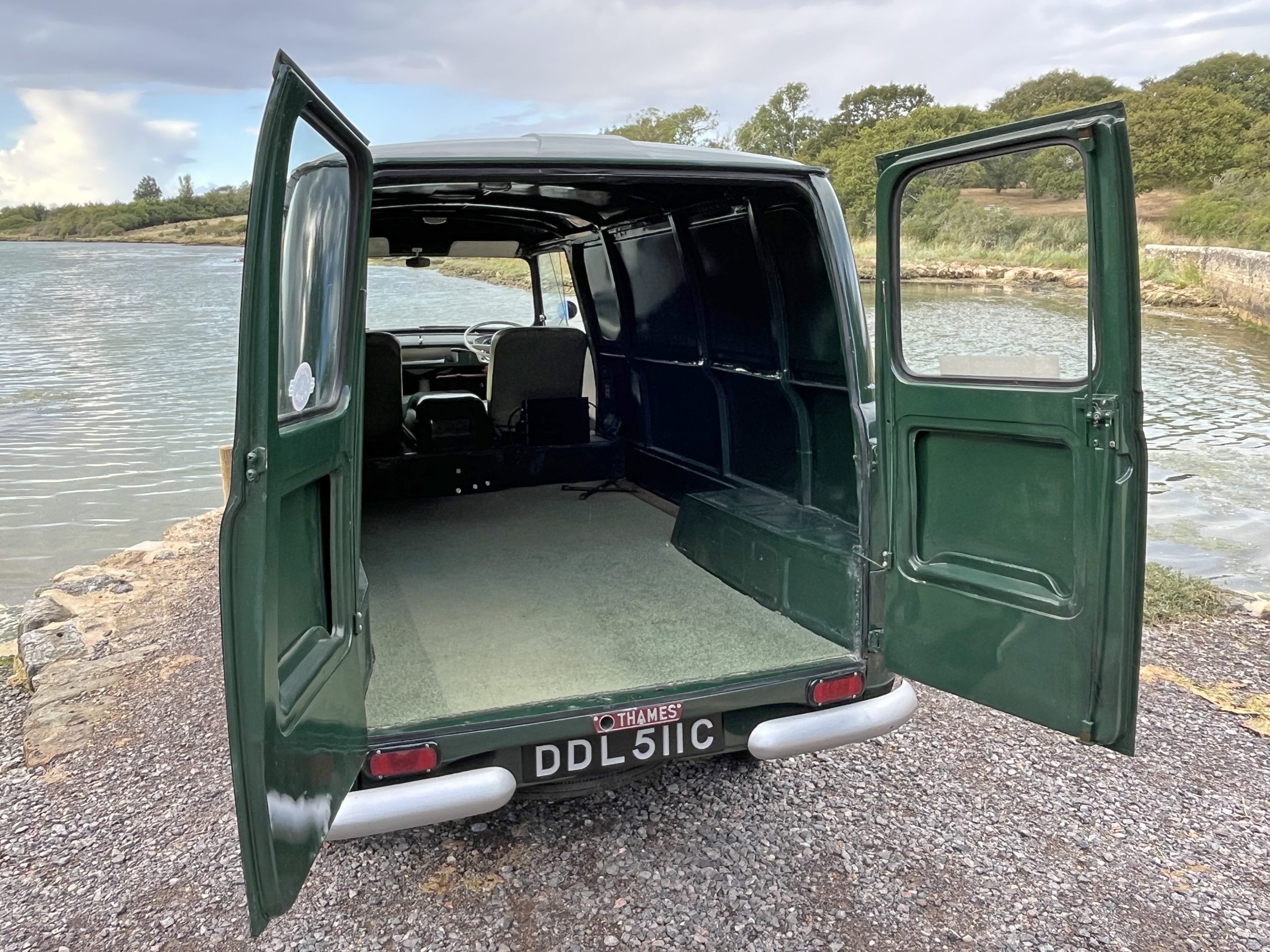
Ford offered several different body styles in addition to the panel van, which included a Minibus and the short-lived Deluxe estate car, plus also a steel-bodied factory pick-up which is virtually extinct now. The wooden-backed pick-up was a popular version which was included in the standard Ford range from 1961. A separate chassis frame also allowed the 400E to be sold as a chassis, chassis & scuttle or chassis cab to coachbuilders such as Kenex and Martin Walter. High-top vans, ambulances, PSV coaches, milk floats, refuse trucks, Luton vans and mobile shops were all built.
Graeme Farrar from the Isle of Wight, the owner of this Ford Thames 15cwt Van, has known its previous owner and restorer, Dick Powell, for many years. Graeme had previously been offered another Thames 400E with added side windows by Dick about 15 years ago, which he turned down but regretted it ever since. So, when Dick, who is now in his 80s, decided to downsize his collection, knowing that Graeme had always been interested in this van, he agreed to sell it to him on condition that he wasn’t going to put in a big V8 engine or modern wheels. Graeme had no intention of doing that, so a price was agreed and finally Graeme got himself the 400E he had always wanted in August 2024.
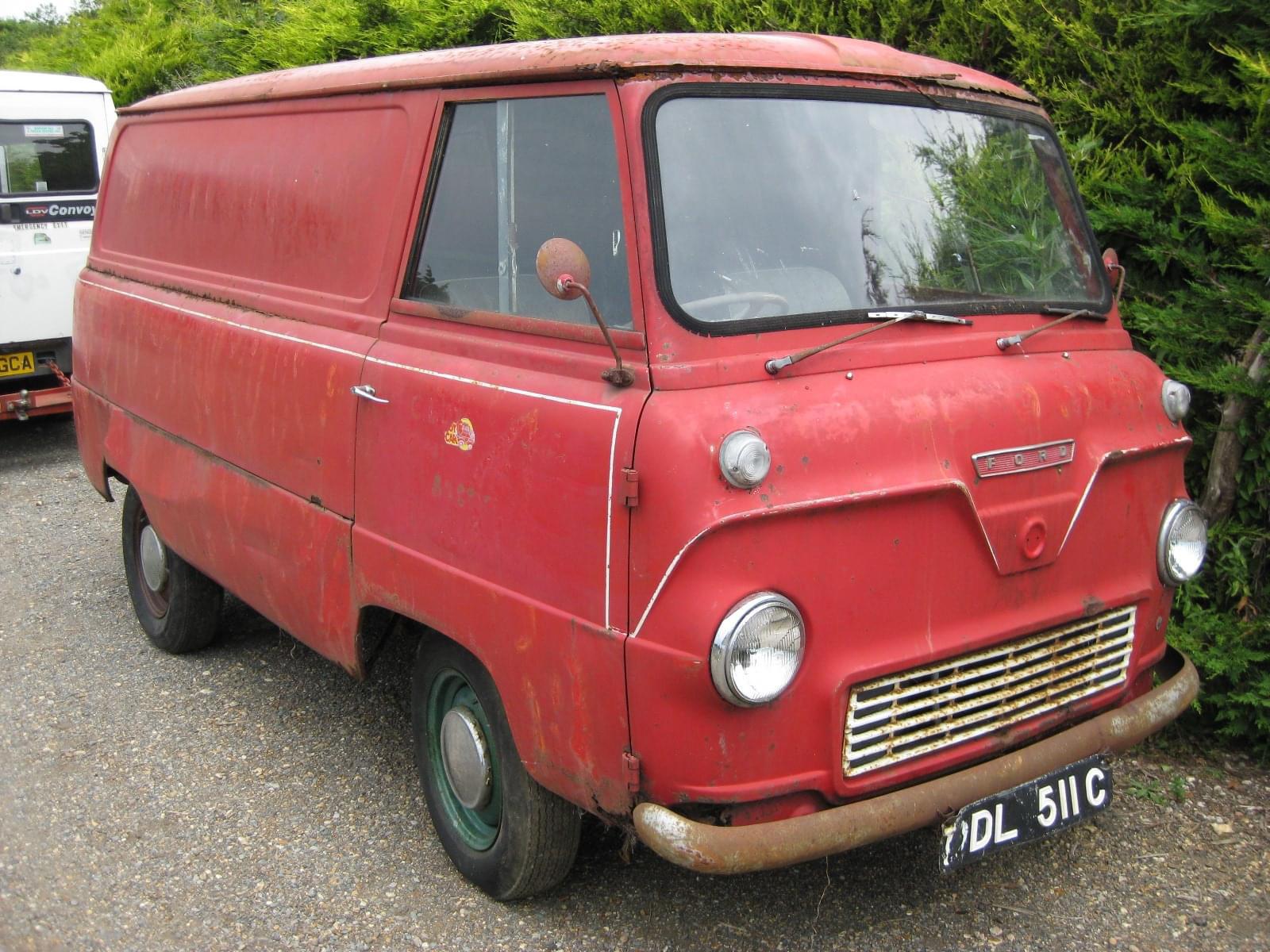
When Dick got the van, several years ago, it was painted red, and from a distance didn’t look too bad. However, closer inspection revealed it was rotten. In fact – Dick described it as in “basically scrap” condition. The gutters had rusted away completely and all the panels below the waistline were rotten. The rear panel and firewall were renewed, as were the door pillars and the bottoms of the doors. A lot of oxy-acetylene welding was needed. Dick repainted the van himself in enamel paint in an original Ford shade, Goodwood Green. The engine, gearbox, suspension and brakes were all overhauled or replaced. The original seats were retrimmed, which Graeme notes are pretty comfortable. It took Dick five years of his spare time to restore the van to the condition it is in now.
“Dick had collected a lot of the Thames vans and pickups that were on the island in order to cannibalise them to make good ones,” explains Graeme. “He still has a 400E pickup that was made from three rough ones. He gave me a load of spares with the van, including an original 400E jack. I’ve had it up on the ramp in my workshop and it is very solid underneath.”
There was a hole in the front bumper, so Graeme fitted a period spotlight on it to cover it up. Apart from that, it is exactly as he bought it. There are a couple of leaks to cure, from above each of the cab doors, so Graeme is on the lookout for a new set of door seals. The Thames 400E Owners Club is sadly no more, so finding parts is a question of online searches. Engine parts are relatively easy, due to it being shared with the Consul.
The van’s 1703cc petrol engine is probably the original. There are just over 43,000 miles on the clock, which could be the genuine mileage for a van on a small island. An unusual feature is the speedo which has an orange band that rotates round to indicate how fast you are going, instead of a conventional needle.
It has the optional extra side loading door and optional heater. The wiring is original. Being a late model van from the production run (the last Thames 400E was built in August 1965) there is a Ford badge on the front, fitted from March 1965, rather than the more usual Thames badge, and it has a four-speed column change gearbox from the Zephyr 4 rather than the earlier three-speed.
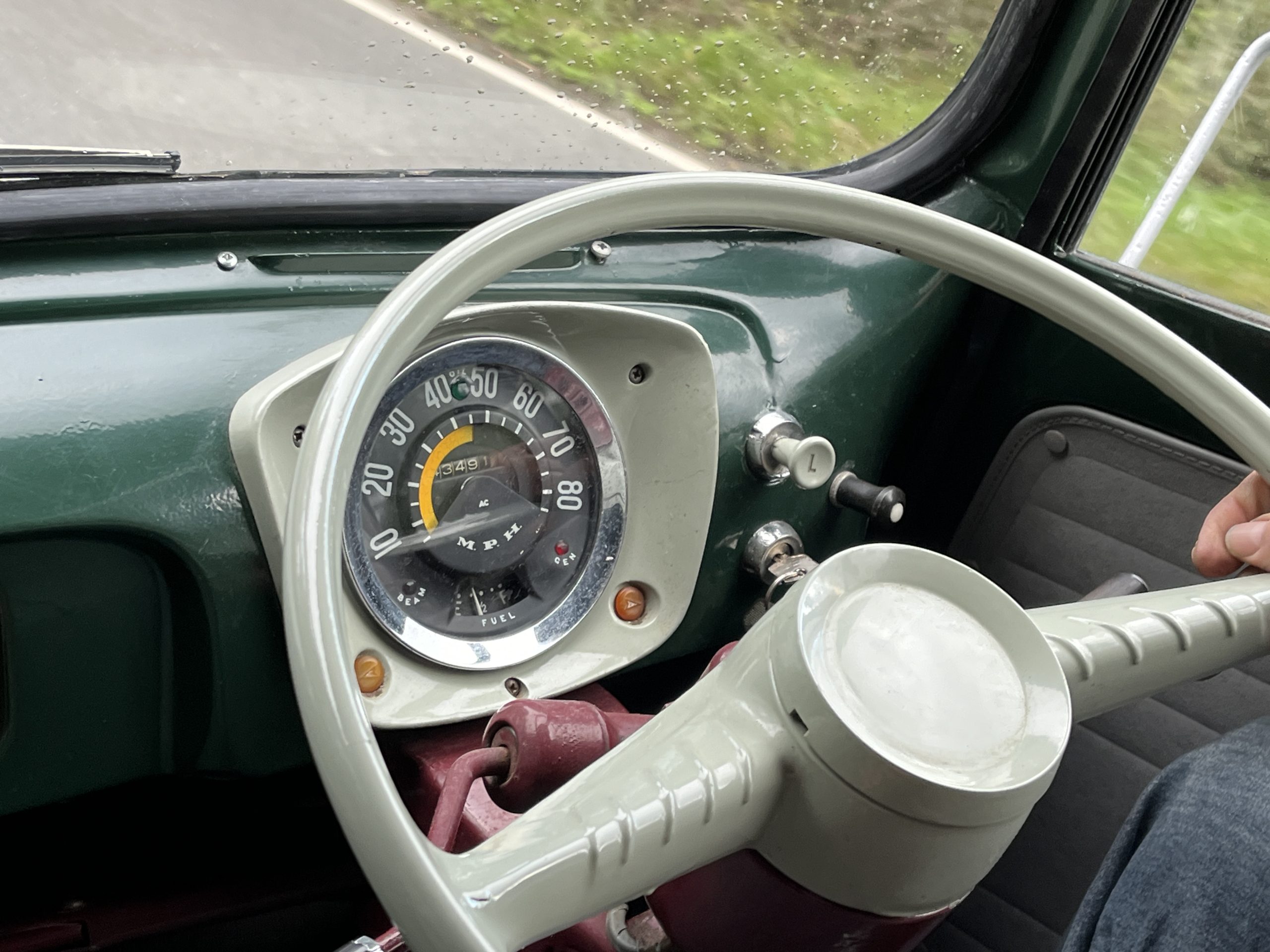
“It will get to 55mph quite happily, although it is quite noisy as the sound bounces around in the back of the van, with little sound insulation,” Graeme tells me. It was certainly able to pull well up the Isle of Wight hills that we encountered on the way to the photo shoot. “The gear mechanism is good – it goes into gear well. There are non-servo assisted drum brakes all round, but it stops okay. Dick spent about £500 on a new set of crossplies. It drives quite well on them, but just feels a little bit strange when going round tight corners. The steering is quite light – I think it would be heavier on radials, especially at parking speeds.”
The van is almost entirely to original specification. It has the traditional Ford vacuum wipers, which Graeme needed to demonstrate to me on the way back after the photo shoot as rain began to fall, reducing visibility somewhat on the uphill stretches with the engine under load. “The diesel variants had electric wipers, which is an upgrade I’d be tempted by,” Graeme informs me.
The van has been on the island all its life – note its ‘DL’ registration, denoting an IoW issue. It was bought new by a newspaper distributor in Arctic Road, Cowes, near the River Medina. It was last on the road in 1990, then owned by a farmer in Northwood near Cowes, taxed as a “Farmers Goods” vehicle.
Graeme now plans to take it over to a few shows on the mainland, which might be the first time it has left the Isle of Wight, where, being a van, he also plans to sleep in it. He owned a smaller Thames 300E many years ago, but this is his first van of this size.
He is very into classic Fords, having been involved in setting up the Isle of Wight Classic Ford Club about 24 years ago. His first car was a Mk1 Escort 1100 estate. He currently owns six classic Fords, although no Ford Classic – he is restoring a Ford Consul Capri, however. He also has two Mk1 Capris and two Mk2 Cortinas, one of which is a genuine Hampshire & Isle of Wight Constabulary Lotus Cortina Police car that was based on the island, a model of which was produced by Corgi for Atlas Editions’ British police cars series. Graeme jokes that with the Police Cortina next to the Thames van, it looks like he’s just been pulled over after doing a bank job!
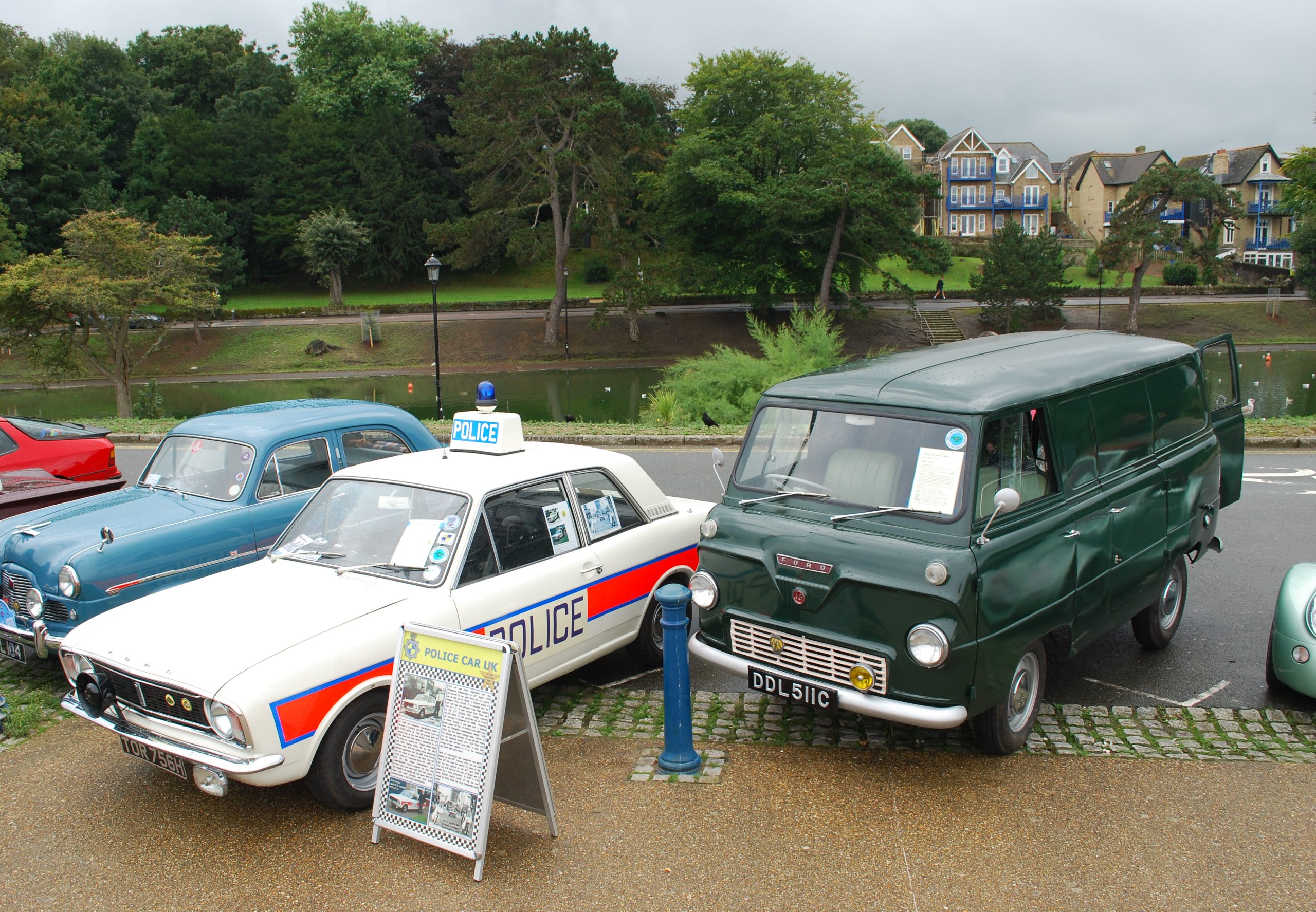
Thanks to Graeme for taking the time to tell me about his van, as well as allowing me to relive part of my childhood, as a friend’s parents had one of these in the same colour that we used to go out in on day trips.
For more like this subscribe to Classic & Vintage Commercials magazine by subscribing here. And find the latest news, exclusive looks and more at the CVC website here.

